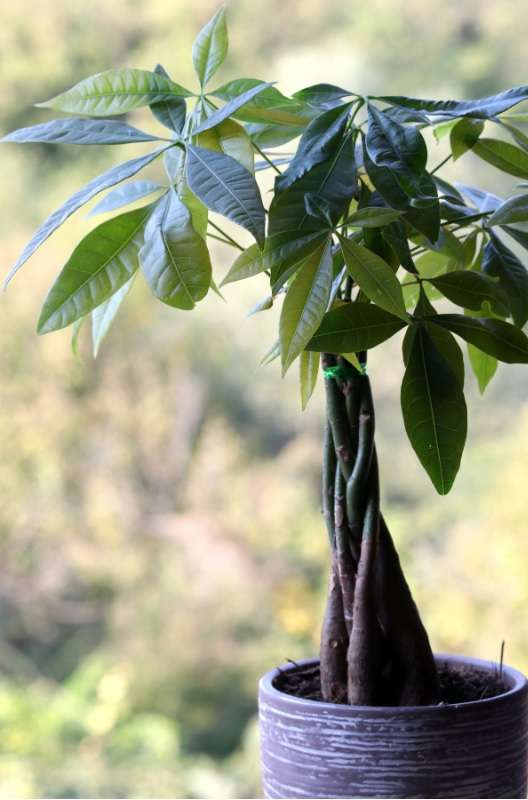Have you ever wondered where money comes from? It’s a question that people have been asking for centuries and one that has a surprisingly simple answer: money does not come from trees!
But what exactly does this mean? In this post, I’ll explore the fascinating history of the phrase money doesn’t come from trees. I’ll also cover where the money comes from and where to get more of it.
From the early days of paper currency to the modern printing techniques used today, we’ll take a deep dive into the world of money and the role that tree plays in its creation.
So grab a seat and get ready to learn all about the fascinating connection between money and trees.
The Origin of the Phrase ‘Money Doesn’t Grow on Trees
Have you ever heard the phrase “money doesn’t grow on trees”? It’s a common expression that means money. There is a limit to it, and you must earn it through hard work.
But where did this phrase come from?
The origin of the phrase is not entirely clear. But it is likely to have originated in the United States in the late 1800s.
One theory is that the parents would use the phrase to teach their children the value of money and hard work.
They would tell their children that money doesn’t grow on trees. This meant that it doesn’t come easily, and they had to work for the money through laborious work.
Another theory is that the phrase was referencing allowances given to children.
Parents would explain to their children that they couldn’t just ask for money whenever they wanted it. And to reinforce that, they would say that it was because “money doesn’t grow on trees.”
This was a way of teaching children to be responsible with their money and to appreciate the value of hard work.
Regardless of its exact origin, the phrase has become a popular idiom. It serves as a reminder to that you must work for your money through hard work or investment.
The Literal Aspect: Money and Trees
When you think of paper money, is easy to assume it comes from trees. However, that’s not entirely true.
Paper currency was once made from tree pulp. However, modern banknotes are made from a blend of cotton and linen fibres.
This blend makes the banknotes more durable and resistant to wear and tear.
But that’s not to say that trees don’t play a role in the production of banknotes. The cotton and linen fibres used to make banknotes come from plants.
Cotton plants produce cotton, and flax pants the linen. You can find these plants on farms everywhere.
Then they are harvested and processed to create the fibres used in banknote production.
So, while money directly doesn’t grow on trees, the plants used to create the fibres for banknote production are grown in a similar manner to trees.
The Urban Tree Festival explains that trees and plants have played a significant role in the history of banknotes. Some early banknotes even featured tree-related imagery.
It’s also worth noting that the use of cotton and linen fibres in banknote production has some environmental benefits.
These fibres are renewable resources that can be grown and harvested sustainably.
Additionally, the durability of banknotes made from these fibres means they can be used for longer periods.
This reduces the need for frequent replacements and further reduces waste.
By using renewable resources like cotton and linen, banknote production can be more sustainable and environmentally friendly.
The Concept of Money Trees
Money doesn’t grow on trees? It’s true that paper money is not literally growing on trees. But there is a popular symbol of wealth and prosperity known as the money tree.
The money tree is a plant with a braided trunk and green leaves. It is a popular gift or decorative item in homes and businesses in some cultures.

According to Chinese legend, the money tree is a holy tree that can bring good fortune and wealth to those who possess it.
The leaves of the money represent the five elements of balance: earth, fire, water, wind, and metal.
Some people believe that varieties of the money tree plant, such as the five-leaf money tree, bring even greater luck and prosperity.
While the concept of a money tree may seem like a superstition or myth, there are some practical benefits to having plants in your home or office.
Plants can help purify the air and create a more relaxing and productive environment.
In addition to the plant itself, there are also products and services that use the idea of a money tree to promote wealth and abundance.
For example, there are financial apps and investment services with names like “MoneyTree” that aim to help you grow your wealth over time.
While the idea of a money tree may not directly result in cash flowing into your bank account, it can serve as a positive symbol of abundance and prosperity.
You can keep a money tree plant in your home. Or simply use the concept as a reminder to focus on your financial goals.
Additionally, it can be a helpful tool in cultivating a mindset of abundance and wealth.
If not from trees, where does money come from?
Ok, so “money doesn’t grow on trees,” but have you ever wondered where the money actually comes from?
Contrary to popular belief, money doesn’t come from trees. Instead, it comes from a combination of materials such as cotton and linen fibres.
The process of creating money involves several steps. First, the Federal Reserve Bank prints paper currency and then distributes it to banks and financial institutions.
The Federal Reserve also controls the money supply by adjusting interest rates and regulating the amount of money that banks can lend out.
In addition to paper currency, money also exists in the form of digital currency. This includes things like credit card transactions, online payments, and cryptocurrencies like Bitcoin.
Mining is the process of creating Digital currency. This process involves solving complex mathematical equations to verify transactions and add them to a public ledger.
The creation of money is a complex process that involves many different factors and players. While money may not grow on trees, it is an essential part of our economy and plays a crucial role in our daily lives.
The Effort Behind Money
Making money is not easy. It requires effort and hard work. Just like your plant, water and care for a tree to grow, you need to earn, save, and invest your money for it to grow.
You need to put in the effort to earn money. This means finding a job, starting a business, or freelancing.
It may involve doing tasks that you don’t enjoy, but it’s important to remember that every job has its own set of challenges.
Managing your personal finances also requires effort. You need to create a budget, track your expenses, and make sure that you’re not spending more than you earn.
This may involve doing chores like cooking at home instead of eating out or finding ways to save money on your bills.
One way to make the effort behind money more manageable is to break it down into smaller tasks.
For example, instead of trying to save a large amount of money all at once, you can set a goal to save a certain amount each month.
This can make it easier to stick to your budget and reach your financial goals.
Making money and managing your personal finances requires effort.
But just like how trees can grow into something beautiful and valuable, your money can grow into something that can help you achieve your dreams and live the life you want.
What is Money Made Of?
While some people might think that money is made of paper, that’s not entirely true.
In fact, paper money is made from a unique blend of materials that makes it more durable and resistant to wear and tear.
In the United States, paper money is composed of 75% cotton and 25% linen fibres, by the Bureau of Engraving and Printing.
This combination of materials gives paper money its distinctive texture and feel.
The United States Mint makes coins from a variety of materials, including cupro-nickel (nickel, dime, quarter dollar, and the half dollar), copper-plated zinc (penny), and manganese-brass (dollar coin).
The materials used to make money vary from country to country.
For example, in Australia, plastic notes come from a place called the Federal Reserve Bank of Australia. The notes are made from a polymer material that is more durable than paper. This makes them last longer and reduces the need for replacement notes.
In ancient times, money was made from a variety of materials, including shells, beads, and precious metals.
In fact, the first paper money was made in China during the reign of Emperor Zhenzong. It was made from the bark of mulberry trees, which is why some people say that money grows on trees.
While money doesn’t grow technically on trees, the materials used to make money have evolved over time to make it more durable and resistant to wear and tear.
Frequently Asked Questions
Does money come from paper?
Yes, paper is used to make money, but not just any paper. The paper used to make money is a special blend of cotton and linen fibre, which makes it durable and difficult to reproduce. This unique blend of paper is what gives U.S. currency its distinct texture and feel.
Where does money come from?
Money comes from various sources, including the government and private institutions. The government is responsible for printing currency and regulating its circulation. Private institutions, such as banks, also play a role in creating and distributing money through loans and other financial services.
Is money made from cotton?
Yes, money is made from a blend of cotton and linen fiber. This unique blend of paper makes U.S. currency durable and difficult to reproduce. The cotton used to make money is grown in the United States and is carefully selected and processed to meet the strict standards required for currency production.
Is U.S. money made from trees?
No, U.S. money is not made from trees. While paper is used to make money, the paper used to make U.S. currency is a special blend of cotton and linen fiber, which makes it durable and difficult to reproduce. The use of cotton and linen fiber ensures that U.S. currency is of high quality and can withstand the wear and tear of everyday use.


